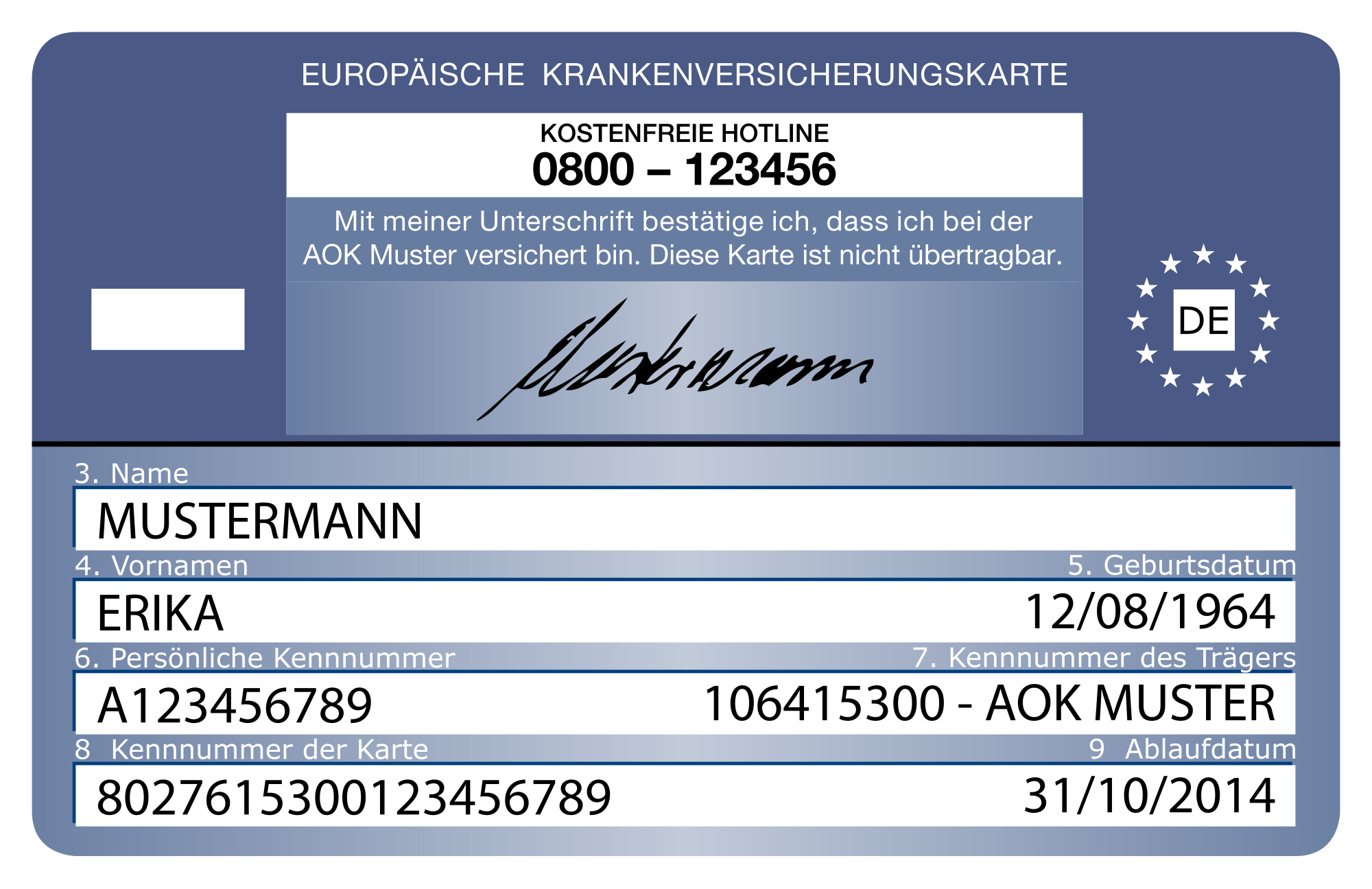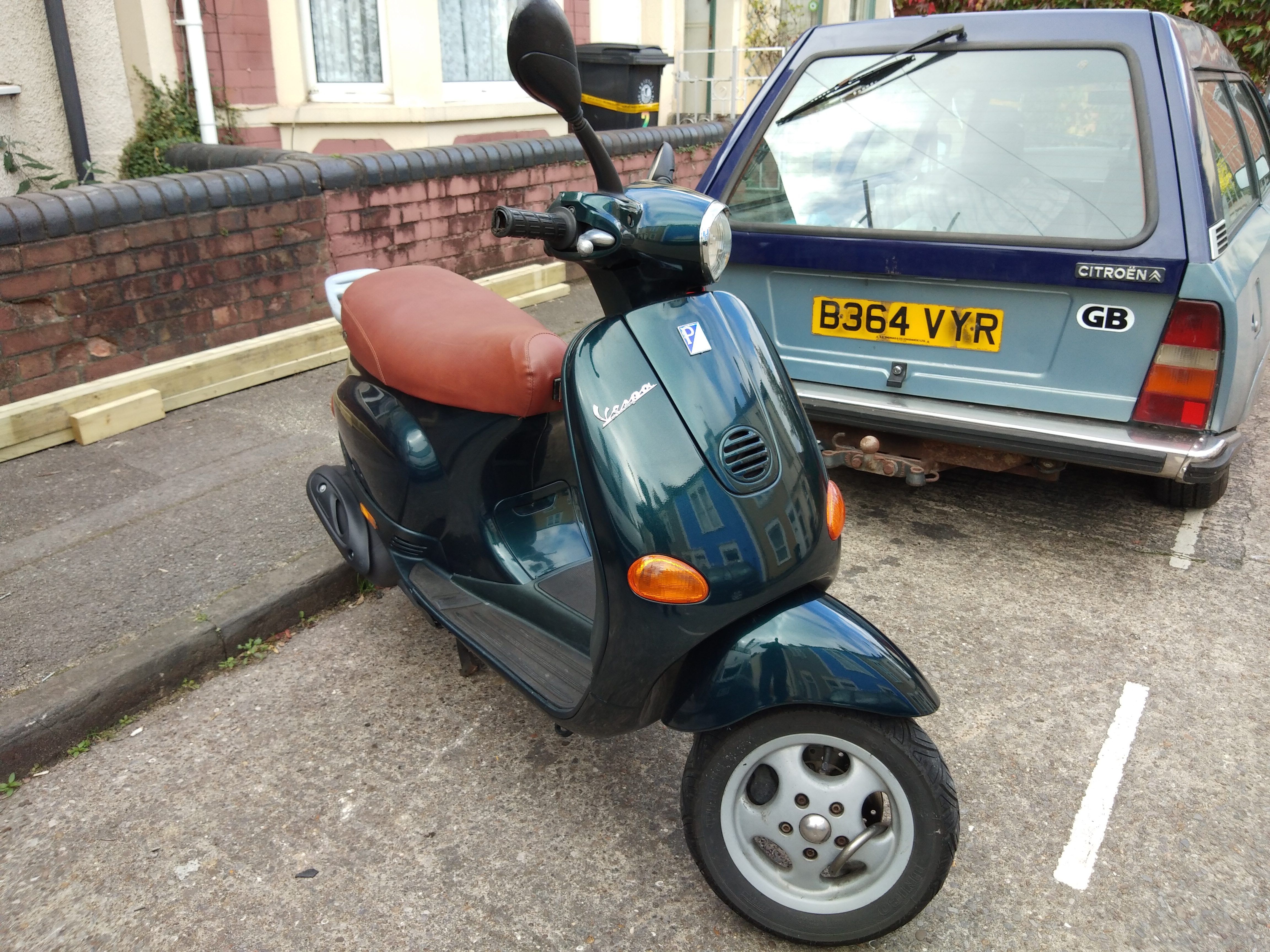Yesterday, you may have noticed that the blog was shook up a bit; new logos were added to the official Twitter, Facebook, and Instagram pages!
I always thought that a sandy 'S' was great, but now I reckon a rider on the sand better reflects what this blog's about.
Wednesday 26 June 2019
Monday 17 June 2019
European Health Insurance Card
 |
| "Elektronische Gesundheitskarte Mustermann RS" by Lumu is a Public Domain work. |
The European Health Insurance Card (commonly known as an EHIC) was first issued in 2004 and is proof of entitlement to medical treatment within Europe; with the European health insurance card, you are entitled to health insurance and your medical expenses are covered under the legislation in force in the country you are visiting. [1]
However, it has come to my attention that a lot of my European friends haven't been made aware of this. In the unlikely event that you were to be injured abroad, they could be stung with having to pay for treatment if they were to see a doctor.
You should also ask for a receipt or certificate any time you use your European Health Insurance Card. In some countries, state healthcare is totally free and you will pay nothing. Otherwise, you will usually be asked to pay for the treatment or prescription at the time and you reclaim some or all of the cost afterwards. [2]
 |
| "Hospital room ubt" by Tomasz Sienicki is a public domain work. |
Currently, you can use your EHIC within the European Economic Area (All European Union members plus Norway, Iceland, and Liechtenstein) and Switzerland. To qualify for an EHIC, you must either meet one of two criteria:
- Be a citizen of the EU, EEA, or Switzerland.
- Be a non-citizen but legal resident in the EU, EEA, or Switzerland.
For non-citizens to receive the EHIC, they must pay or be covered by social security. However, you cannot use your EHIC for treatment in Denmark, Norway, Iceland, Liechtenstein, and Switzerland. Croatians cannot use their EHIC in Switzerland. [2]
It's also good custom to buy travel insurance along with using your EHIC card, If you’re unlucky enough to need more serious or emergency medical treatment then the Association of British Insurers recommends using your travel insurance as policies provide not only medical cover, but will often cover other subsequent costs, which can be anything from rearranging your flight home, to having a family member stay on with you and even taxis and transport to the hospital for further appointments. [3]
Residents of Europe can apply for an EHIC on the official website, the UK version is available here. Don't get stung by companies who'll charge for a 'fast-track' service as EU law reiterates that the EHIC card is free of charge.
For now, I will continue to consider that the UK is still a member of the European Union until a final decision has been made; there is a lot of speculation as to what will happen as Brexit has already been delayed... twice, but "If the UK leaves with no deal, your EHIC will no longer be valid." [4]
So no matter what you're doing or where you're going this year, don't get stung by medical expenses and make sure you're covered for any unnecessary events.
I'm off to France in 2 weeks tomorrow to write about the Dune of Pilat and do some Sandboarding while I'm there, I've already got my EHIC and travel insurance.
References:
[1]: APRIL International. 2019. The European Health Insurance Card. [ONLINE] Available at: https://uk.april-international.com/en/administrative-procedures/european-health-insurance-card. [Accessed 17 June 2019].
[2]: Expatica. 2019. EHIC: European Health Insurance Card explained | Expatica. [ONLINE] Available at: https://www.expatica.com/healthcare/healthcare-basics/ehic-european-health-insurance-card-explained-100250/#EHICwork. [Accessed 17 June 2019].
[3]: lovemoney.com. 2019. What does an EHIC really cover? | lovemoney.com. [ONLINE] Available at: https://www.lovemoney.com/guides/16395/what-does-an-ehic-really-cover. [Accessed 17 June 2019].
[4]: BBC News. 2019. Will the EHIC be valid after Brexit? - BBC News. [ONLINE] Available at: https://www.bbc.co.uk/news/world-europe-44850972. [Accessed 17 June 2019].
Wednesday 12 June 2019
Helmets for Sandboarding
In November 2016, the wearing of helmets was made mandatory in all InterSands Sandboarding events with a unanimous vote from members and athletes from Chile, Argentina, Brazil, Peru, and Switzerland; InterSands is different from Dune Riders International but they are another sports organisation that host global sandboarding events.
In my honest opinion, I agree with the ruling as this can reduce risks of injuries, but at the same time this may only have come about due to negativity bias (i.e. bad news is more prevalent and popular with readers than good and articles on death may be more popular on someone winning a championship title for example); still it's a move and I welcome it.
As well as the sporting organisations, tour agencies such as Kalbarri Sandboarding will include helmets as part of your included equipment and many other agencies will do the same and some agencies will even refuse to allow you to board if you don't wear a helmet.
It's not exactly a law but as mentioned in articles where people have actually died whilst Sandboarding, it will probably help to wear a helmet from time to time as falling into sand isn't hard but it's not soft neither.
Some of you may or may not be aware, I also ride a moped; I used to have an old Honda City Express but now I've gone up in the world and own a little green Vespa.
In the UK, it's legally required that you wear a helmet whilst riding a motorcycle.
In other countries, the law is different and/or different safety standards may be used, but with other ventures such as Sandboarding, it's not a requirement to have a helmet at all; however standards that are often used in motorcycle helmet manufacturing are the ECE, DOT, and Snell; you can find about these standards by clicking here, but the tests used for seeing if a helmet is up to safety standards include: Abrasive resistance, fire resistance, impact resistance, penetration resistance, and assessing build quality so if you're looking to buy a helmet which may or may not be labelled for Sandboarding "as this sport is niche" then at least look for these standards if you can, or better still a snowboarding helmet will work just fine.
It's also a good idea not to buy from abroad (most notably, China) only because you will often find replicas made there, sold abroad, however with some items it's not as obvious that some big brand has been replicated; it'll be common to see a fake bag being sold as a "Lewis Vitten" (take a guess on the real brand name). Also, if you're buying from abroad; make a good guess if you think the company is reputable; as a lot of low-cost high-traffic warehouses shipping goods all over the world will use techniques to cut down on their costs, a good technique to reduce cost is to use lighter shipping materials; instead of shipping in a cardboard box with a bubble-wrapped interior, you might often find your new acquisition delivered to your house in a bin bag; so whatever protection the helmet had in the factory, it's been diminished from shipping.
I've got a helmet, as I like the idea of keeping my head in one piece; it was a cheap helmet from the UK that was designed for skateboarding. It's rare, if not impossible to find a "Sandboarding" helmet, a snowboarding helmet I suspect would work.
If you've got any opinions on the use of helmets in Sandboarding, leave a comment and this week's poll will be regarding helmets!
In my honest opinion, I agree with the ruling as this can reduce risks of injuries, but at the same time this may only have come about due to negativity bias (i.e. bad news is more prevalent and popular with readers than good and articles on death may be more popular on someone winning a championship title for example); still it's a move and I welcome it.
As well as the sporting organisations, tour agencies such as Kalbarri Sandboarding will include helmets as part of your included equipment and many other agencies will do the same and some agencies will even refuse to allow you to board if you don't wear a helmet.
It's not exactly a law but as mentioned in articles where people have actually died whilst Sandboarding, it will probably help to wear a helmet from time to time as falling into sand isn't hard but it's not soft neither.
Some of you may or may not be aware, I also ride a moped; I used to have an old Honda City Express but now I've gone up in the world and own a little green Vespa.
 |
| "Piaggio Vespa ET4 Moped" by Jack Soley is licensed under CC BY-SA 4.0 |
In other countries, the law is different and/or different safety standards may be used, but with other ventures such as Sandboarding, it's not a requirement to have a helmet at all; however standards that are often used in motorcycle helmet manufacturing are the ECE, DOT, and Snell; you can find about these standards by clicking here, but the tests used for seeing if a helmet is up to safety standards include: Abrasive resistance, fire resistance, impact resistance, penetration resistance, and assessing build quality so if you're looking to buy a helmet which may or may not be labelled for Sandboarding "as this sport is niche" then at least look for these standards if you can, or better still a snowboarding helmet will work just fine.
It's also a good idea not to buy from abroad (most notably, China) only because you will often find replicas made there, sold abroad, however with some items it's not as obvious that some big brand has been replicated; it'll be common to see a fake bag being sold as a "Lewis Vitten" (take a guess on the real brand name). Also, if you're buying from abroad; make a good guess if you think the company is reputable; as a lot of low-cost high-traffic warehouses shipping goods all over the world will use techniques to cut down on their costs, a good technique to reduce cost is to use lighter shipping materials; instead of shipping in a cardboard box with a bubble-wrapped interior, you might often find your new acquisition delivered to your house in a bin bag; so whatever protection the helmet had in the factory, it's been diminished from shipping.
I've got a helmet, as I like the idea of keeping my head in one piece; it was a cheap helmet from the UK that was designed for skateboarding. It's rare, if not impossible to find a "Sandboarding" helmet, a snowboarding helmet I suspect would work.
If you've got any opinions on the use of helmets in Sandboarding, leave a comment and this week's poll will be regarding helmets!
Subscribe to:
Posts (Atom)


